
Lindsay Lab - Postdoc Position
Artificial neural networks applied to psychology, neuroscience, and climate change
Spread the word: I'm looking to hire a postdoc to explore the concept of attention (as studied in psych/neuro, not the transformer mechanism) in large Vision-Language Models. More details here: lindsay-lab.github.io/2025/12/08/p...
#MLSky #neurojobs #compneuro
08.12.2025 23:53 — 👍 97 🔁 71 💬 2 📌 0

Finally got the job ad—looking for 2 PhD students to start spring next year:
www.gao-unit.com/join-us/
If comp neuro, ML, and AI4Neuro is your thing, or you just nerd out over brain recordings, apply!
I'm at neurips. DM me here / on the conference app or email if you want to meet 🏖️🌮
03.12.2025 09:36 — 👍 76 🔁 49 💬 1 📌 5
Come work with us!!!
04.12.2025 07:36 — 👍 12 🔁 6 💬 0 📌 1

Thanks! There is a notable difference, though: in Nejad et al. (2025), L5 is trained with a reconstruction loss, i.e., an autoencoder (see Eqs. 4–6 from the methods below). L2/3 then predicts the autoencoder's latent state via a supervised next-step loss. That shouldn't be conflated with a JEPA.
29.11.2025 13:58 — 👍 4 🔁 0 💬 1 📌 0

6/ Finally, we build a hierarchical JEPA version of our model and outline how its architecture could map onto cortical microcircuits, toward a predictive-processing framework with mechanistic links to neuroanatomy. Read the full story here 👇
🔗 doi.org/10.1101/2025...
27.11.2025 08:27 — 👍 12 🔁 1 💬 1 📌 0
5/ Importantly, RPL captures representational motifs across multiple species and cortical areas: On the one hand, successor-like structures resembling those in human V1. On the other hand, its abstract sequence representations are comparable to macaque PFC.
27.11.2025 08:27 — 👍 7 🔁 0 💬 1 📌 0

4/ From raw video streams and without supervision, RPL learns: invariant object identity, equivariant motion variables (position, velocity, orientation, etc.), and a world model that allows simulating plausible motion trajectories entirely in latent space.
27.11.2025 08:27 — 👍 11 🔁 0 💬 1 📌 0

3/ Recent studies indicate that, aside from plausibility, representation-space predictive models like JEPAs also learn more abstract representations than input-space generative models, which tend to focus on low-level details (cf @yann-lecun.bsky.social)
27.11.2025 08:26 — 👍 10 🔁 1 💬 1 📌 0

2/ RPL operates entirely in latent space, avoiding the anatomical issues of predictive coding models that compute prediction errors in input space. Instead, the network predicts future internal representations through a specific recurrent circuit structure.
27.11.2025 08:25 — 👍 7 🔁 0 💬 1 📌 0

1/6 New preprint 🚀 How does the cortex learn to represent things and how they move without reconstructing sensory stimuli? We developed a circuit-centric recurrent predictive learning (RPL) model based on JEPAs.
🔗 doi.org/10.1101/2025...
Led by @atenagm.bsky.social @mshalvagal.bsky.social
27.11.2025 08:24 — 👍 137 🔁 41 💬 3 📌 3
Excited to see the paper fully published. It's an important milestone for training SNNs with exact gradients, replacing our earlier tricks of a "delay line augmentation" to capture temporal relationships. Delays can now be learnt alongside weights naturally. Amazing work @mbalazs98.bsky.social !
25.11.2025 18:24 — 👍 19 🔁 7 💬 0 📌 0
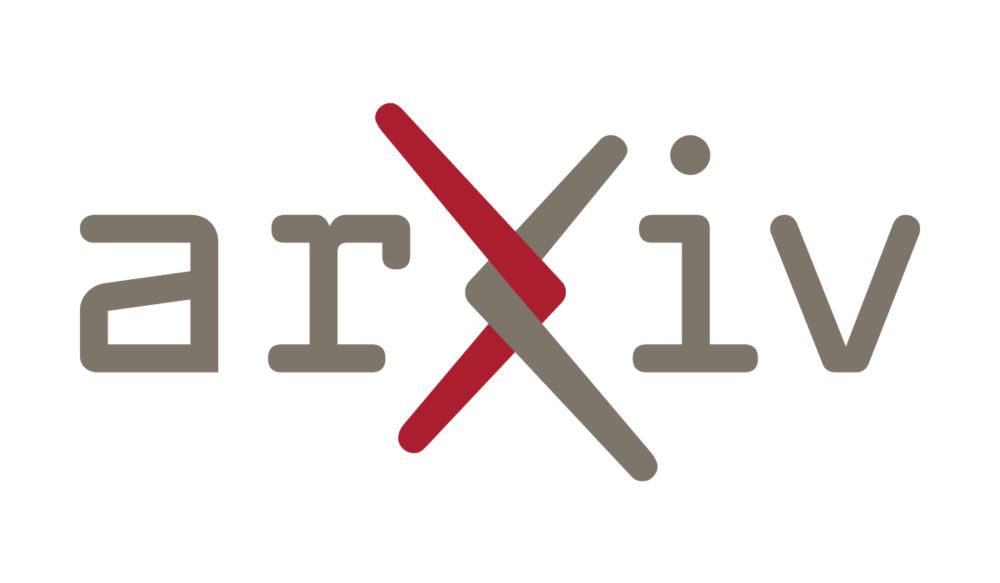
Exploiting heterogeneous delays for efficient computation in low-bit neural networks
Neural networks rely on learning synaptic weights. However, this overlooks other neural parameters that can also be learned and may be utilized by the brain. One such parameter is the delay: the brain...
Psst - neuromorphic folks. Did you know that you can solve the SHD dataset with 90% accuracy using only 22 kb of parameter memory by quantising weights and delays? Check out our preprint with @pengfei-sun.bsky.social and @danakarca.bsky.social, or read the TLDR below. 👇🤖🧠🧪 arxiv.org/abs/2510.27434
13.11.2025 17:40 — 👍 42 🔁 15 💬 3 📌 3
SNUFA 2025
Spiking Neural networks as Universal Function Approximators
Spiking NN fans - the #SNUFA workshop (Nov 5-6) agenda is finalised and online now. Make sure to register (free) soon. (Note you can register for either day and come to both.)
Agenda: snufa.net/2025/
Registration: www.eventbrite.co.uk/e/snufa-2025...
Thanks to all who voted on abstracts!
🤖🧠🧪
23.10.2025 16:17 — 👍 31 🔁 16 💬 0 📌 8
SNUFA 2025
Spiking Neural networks as Universal Function Approximators
Message for participants of the #SNUFA 2025 spiking neural network workshop. We got almost 60 awesome abstract submissions, and we'd now like your help to select which ones should be offered talks. Follow the "abstract voting" link at snufa.net/2025/ to take part. It should take <15m. Thanks! ❤️
01.10.2025 19:16 — 👍 18 🔁 10 💬 0 📌 1

Interested in doing a Ph.D. to work on building models of the brain/behavior? Consider applying to graduate schools at CU Anschutz:
1. Neuroscience www.cuanschutz.edu/graduate-pro...
2. Bioengineering engineering.ucdenver.edu/bioengineeri...
You could work with several comp neuro PIs, including me.
27.09.2025 20:30 — 👍 52 🔁 30 💬 1 📌 4
I’m super excited to finally put my recent work with @behrenstimb.bsky.social on bioRxiv, where we develop a new mechanistic theory of how PFC structures adaptive behaviour using attractor dynamics in space and time!
www.biorxiv.org/content/10.1...
24.09.2025 09:52 — 👍 217 🔁 85 💬 9 📌 9
Truly honored (and a little overwhelmed) to see our work featured in The Transmitter's "This Paper Changed My Life." Huge thanks to @neural-reckoning.org for the kind words - and to our amazing community that keeps pushing spiking neural network research forward 🙏
17.09.2025 14:50 — 👍 45 🔁 8 💬 0 📌 0
SNUFA 2025
Spiking Neural networks as Universal Function Approximators
Submissions (short!) due for SNUFA spiking neural networks conference in <2 weeks! 🤖🧠🧪
forms.cloud.microsoft/e/XkZLavhaJe
More info at snufa.net/2025/
Note that we normally get around 700 participants and recordings go on YouTube and get 100s-1000s views.
Please repost.
16.09.2025 09:33 — 👍 25 🔁 16 💬 0 📌 0

The genetic architecture of the human bZIP family
Generative biology holds the promise to transform our ability to design and understand living systems by creating novel proteins, pathways, and organisms with tailored functions that address challenge...
I am happy to finally share this preprint of my PhD project in @guillaumediss.bsky.social lab at the FMI in Basel.
We used ddPCA to map the genetic architecture of the entire human bZIP interaction network.
www.biorxiv.org/content/10.1...
Thanks to all our co-authors for the great collaboration!
25.08.2025 15:29 — 👍 32 🔁 13 💬 1 📌 2
SNUFA 2025
Spiking Neural networks as Universal Function Approximators
Spiking neural networks people, this message is for you!
The annual SNUFA workshop is now open for abstract submission (deadline Sept 26) and (free) registration. This year's speakers include Elisabetta Chicca, Jason Eshraghian, Tomoki Fukai, Chengcheng Huang, and... you?
snufa.net/2025/
🤖🧠🧪
07.08.2025 11:56 — 👍 30 🔁 16 💬 2 📌 0
We're hiring,, of interest to people in spiking neural networks and neuromorphic particularly. See below. 👇
Note the deadline for applications is very soon! Apologies for this but various admin necessities made it unavoidable.
25.07.2025 13:44 — 👍 17 🔁 7 💬 0 📌 0
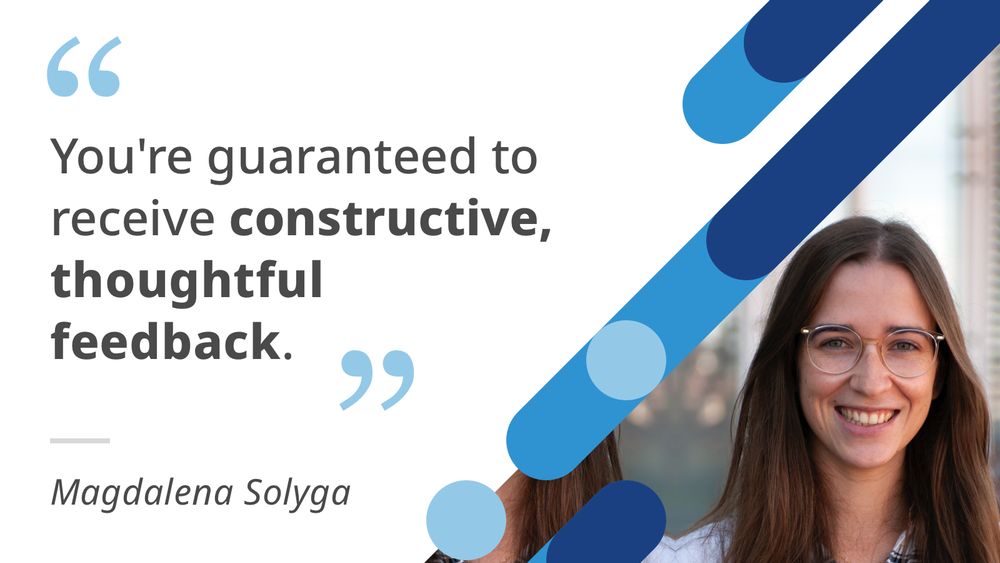
Publishing with eLife: “the future of science lies in greater transparency”
Neuroscientist Magdalena Solyga shares her latest study and her experience publishing with eLife.
Ditching months-long delays for fast, constructive feedback.
This interview with @solygamagda.bsky.social dives into the experience of publishing with eLife and what it could mean for a more open and efficient future in science.
21.07.2025 15:59 — 👍 15 🔁 9 💬 0 📌 0
There might be a bit of misconception here. What the paper very convincingly shows is that visual cortex does not compute global oddball prediction errors and does not receive any top-down predictions that could be used to compute such prediction errors.
14.07.2025 15:44 — 👍 24 🔁 5 💬 1 📌 0
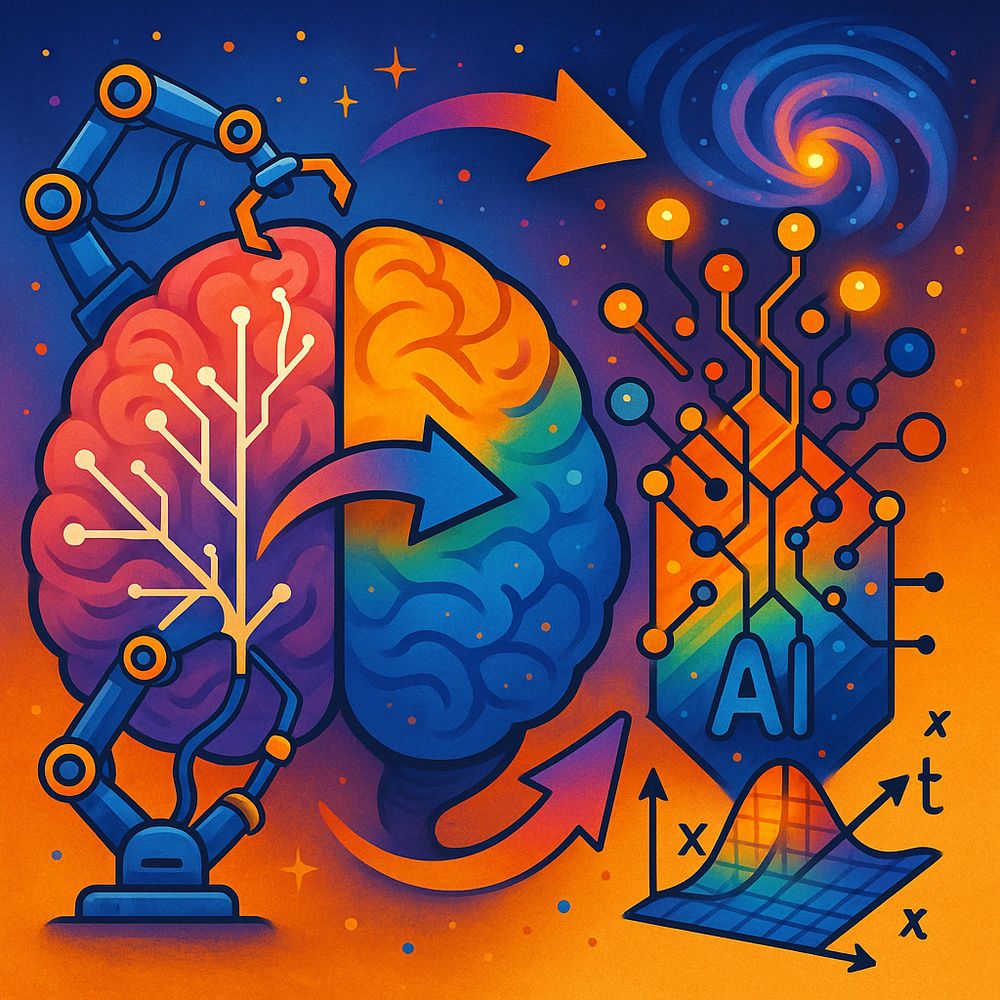
Got prov. approval for 2 major grants in Neuro-AI & Dynamical Systems Reconstruction, on learning & inference in non-stationary environments, out-of-domain generalization, and DS foundation models. To all AI/math/DS enthusiasts: Expect job announcements (PhD/PostDoc) soon! Feel free to get in touch.
13.07.2025 06:23 — 👍 34 🔁 8 💬 0 📌 0
#Imbizo - Simons Computational Neuroscience Imbizo - #Imbizo
Simons Computational Neuroscience Imbizo summer school in Cape Town, South Africa
Here is your last reminder that the application deadline for Imbizo.Africa is nearing quickly, the 1st of July, in fact tomorrow. Still the place where diversity is at its best in the world! Tell all who need to hear. #africa #neuro
30.06.2025 19:53 — 👍 20 🔁 17 💬 0 📌 0
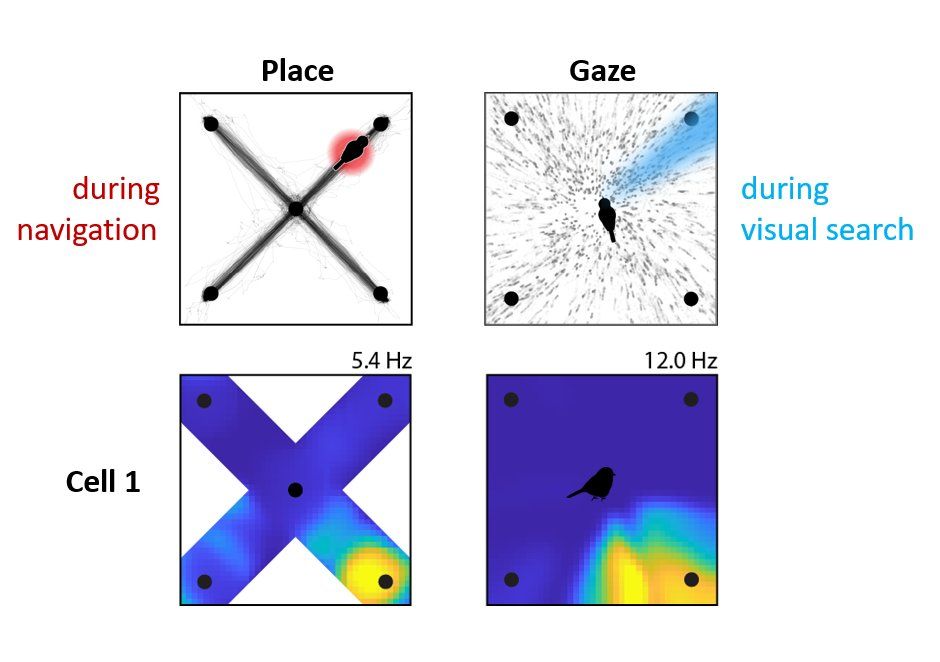
My latest Aronov lab paper is now published @Nature!
When a chickadee looks at a distant location, the same place cells activate as if it were actually there 👁️
The hippocampus encodes where the bird is looking, AND what it expects to see next -- enabling spatial reasoning from afar
bit.ly/3HvWSum
11.06.2025 22:24 — 👍 271 🔁 86 💬 10 📌 5
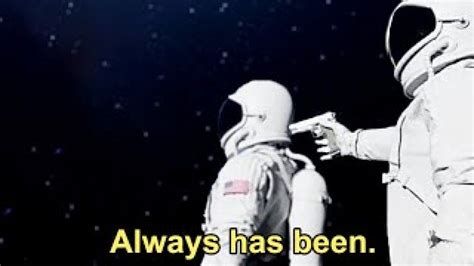 05.06.2025 09:09 — 👍 1 🔁 0 💬 0 📌 0
05.06.2025 09:09 — 👍 1 🔁 0 💬 0 📌 0
Cognitive science journal published by MIT Press.
https://direct.mit.edu/opmi
Science writer, biology PhD
Bylines in @nature.com @science.org @sciam.bsky.social @thetransmitter.bsky.social & more
@frontiersmedia.bsky.social Fellow
Comms @fmiscience.bsky.social
Alumna @mitsciwrite.bsky.social @embl.org
www.linktr.ee/giorgiagguglielmi
Researcher at Cold Spring Harbor Laboratory; Interests: Neuroscience, Predictive processing, Olfaction; albeanulab.cshl.edu
Neuroscience & functional ultrasound imaging. Vision and brain states. Professor at University Medical Center Göttingen. https://brainwidenetworks.uni-goettingen.de/ Co-Spokesperson, EKFZ Center for Optogenetic Therapies. https://ekfz.uni-goettingen.de/en/
Software Research Engineerin computational neuroscience | Institute of Intelligent Systems and Robotics (ISIR), @sorbonne-universite.fr | Brian Developer | editor for @joss-openjournals.bsky.social | interested in open {source,science,education} | He/him
RL researcher at DeepMind
https://schaul.site44.com/ 🇱🇺
Group Leader at @fmiscience.bsky.social
We study the genetic architecture of protein function to develop predictive and generative AI models
Across many scientific disciplines, researchers in the Bernstein Network connect experimental approaches with theoretical models to explore brain function.
Incoming group leader @FMI, Basel
Postdoc @MPI-MG, Berlin | PhD @IMBA, Vienna
Investigating cell fate and loss in tissue dynamics
https://www.fmi.ch/research-groups/groupleader.html?group=150
Applied Mathematician and Theoretical Neuroscientist
Junior Research Group Leader, CAU Kiel, Faculty of Engineering, Department of Electrical and Information Engineering ⛵️
I mainly post about papers that I read or write.
Homepage: wilhelmbraun.github.io
Neuroscientist / Neuroethologist at the Kavli Institute for Systems Neuroscience, NTNU.
www.brkanter.com
#Memory #Learning #Time #Space #Hibernation #Torpor #Sleep #Dynamics #Circuits #AnimalBehavior #Ethology #Ecology
Neuroscientist at the FMI Basel, investigating memories and how to change them
PhD student in computational neuroscience at EPFL, supervised by Wulfram Gerstner @gerstnerlab.bsky.social | Working on computational models of intrinsic motivation, exploration and learning, with a special love for novelty✨
Professor at Cornell BME. Studying the neurobiology of psychiatric #drugs including #ketamine and #psychedelics.
https://alexkwanlab.org
Bring together happenings at the intersection of neuroscience and artificial intelligence #NeuroAI
AI Engineer @ Stein Aerts lab


















 05.06.2025 09:09 — 👍 1 🔁 0 💬 0 📌 0
05.06.2025 09:09 — 👍 1 🔁 0 💬 0 📌 0